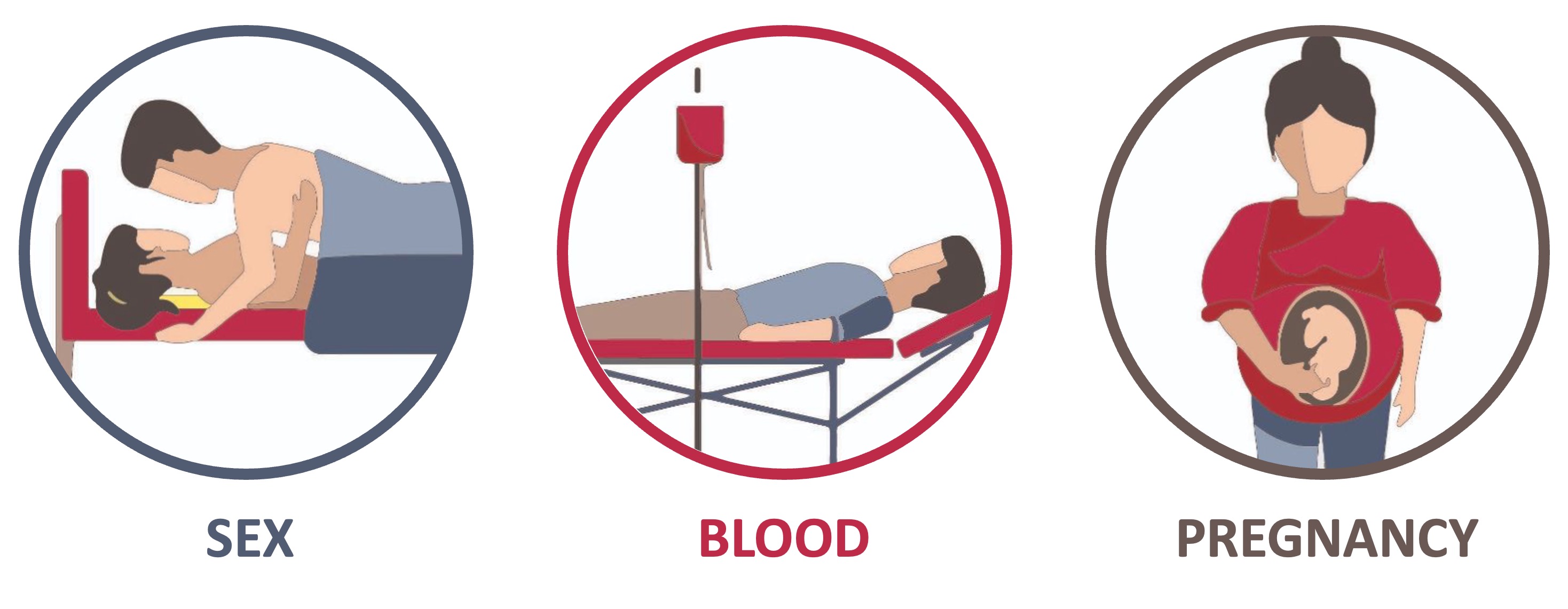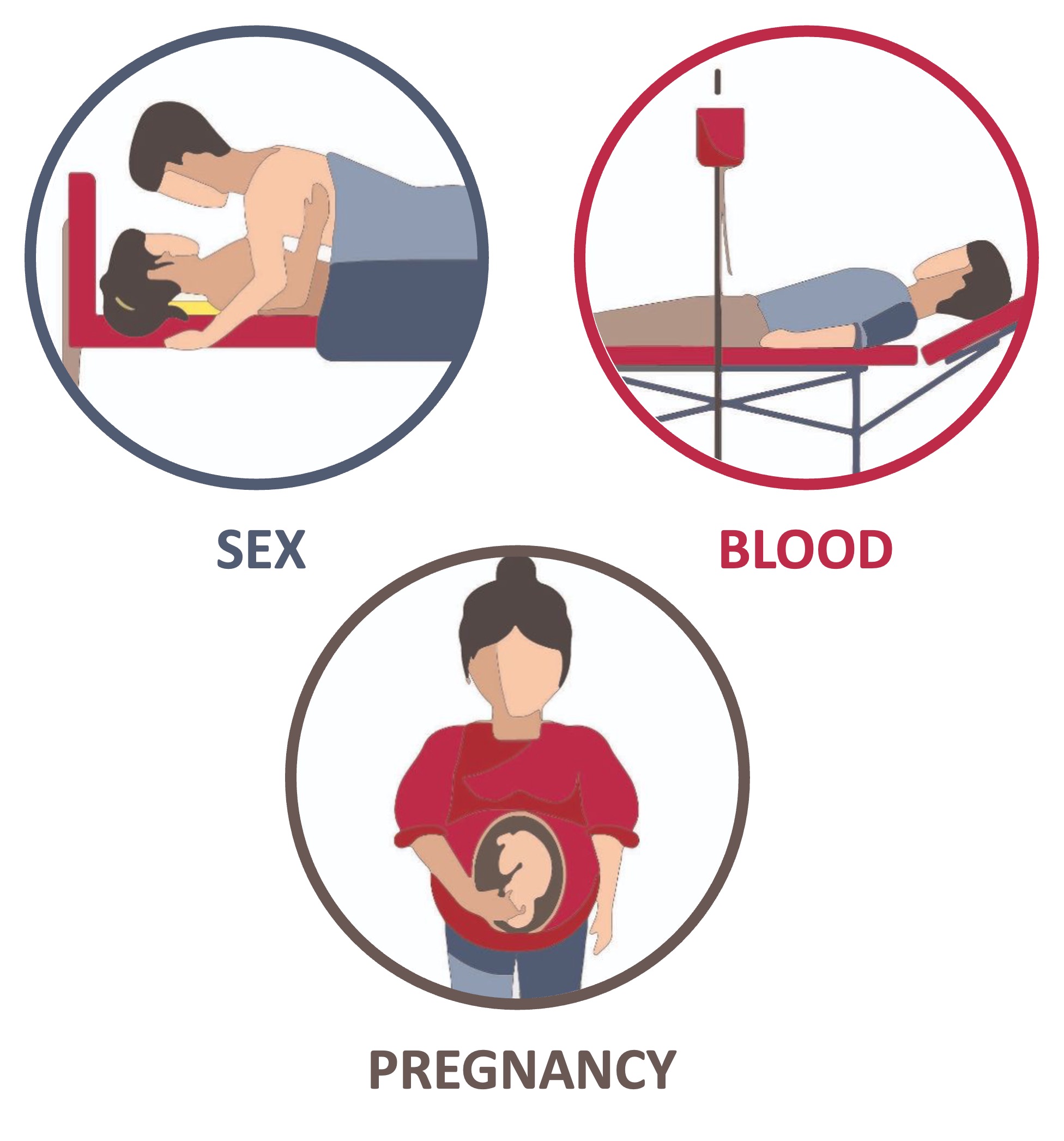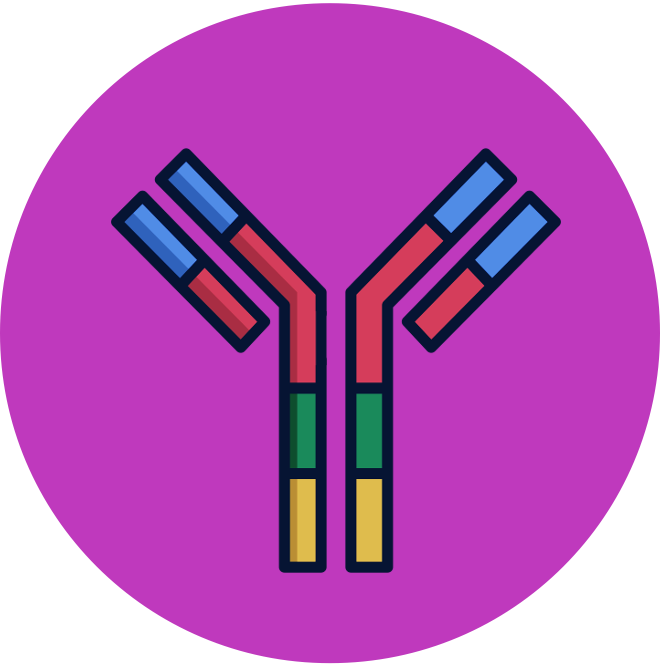

Immunodeficiency
Immunodeficiency is a state in which the immune system’s capacity to fight infection is compromised or absent entirely
-
These disorders may be inherited (e.g. SCIDs), pathogenic in origin (e.g. AIDS) or caused by drug treatments (e.g. immunosuppression)
HIV
The Human Immunodeficiency Virus (HIV) is a retrovirus that infects lymphocytes and consequently disables the body’s adaptive immune system
-
The variety of symptoms and infections caused by the virus are collectively classed as Acquired Immuno-Deficiency Syndrome (AIDS)
HIV specifically targets the helper T lymphocytes, which are responsible for the activation of B cells
-
Following infection, the virus undergoes a period of inactivity (clinical latency) during which infected helper T cells reproduce
-
Eventually, the virus becomes active again and begins to spread, destroying all infected T lymphocytes in the process (lysogenic cycle)
-
With a reduction in the number of helper T cells, antibodies are unable to be produced, resulting in a lowered immunity
-
The body becomes susceptible to opportunistic infections, eventually resulting in death if the condition is not managed
HIV and TH Cells
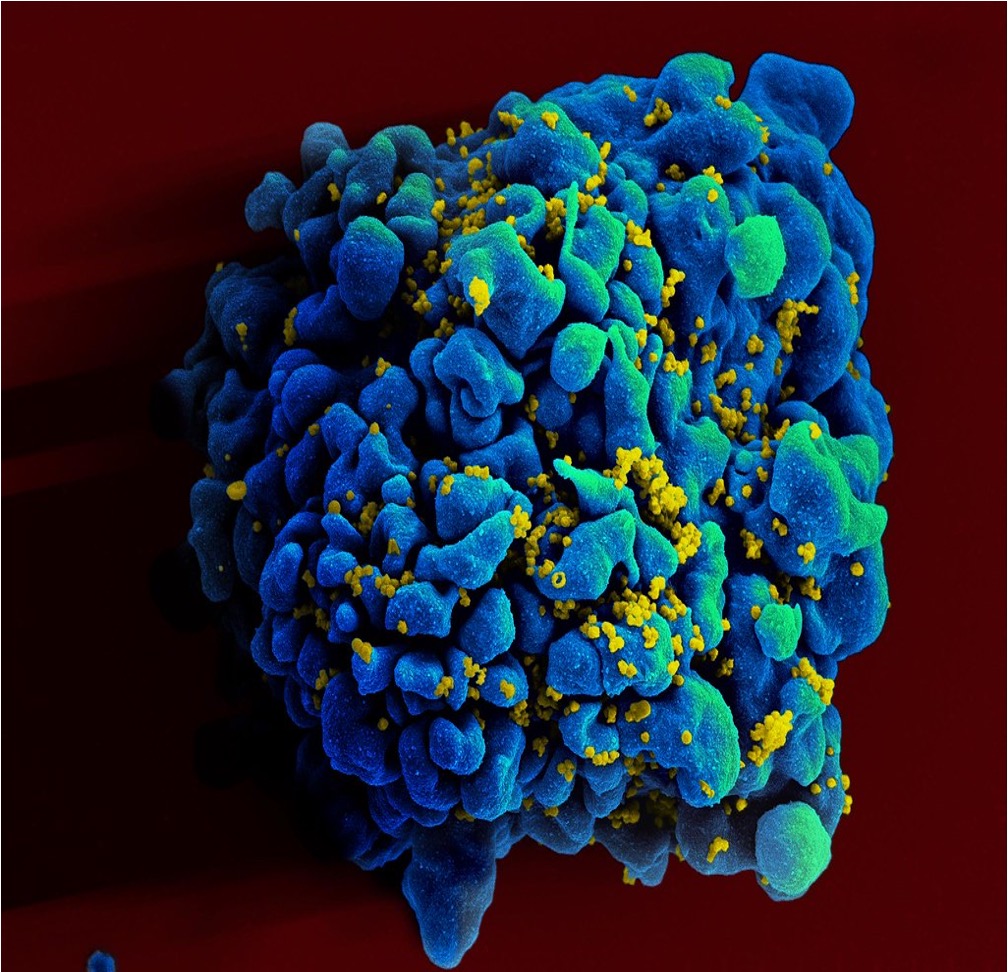
SEM (HIV in yellow)
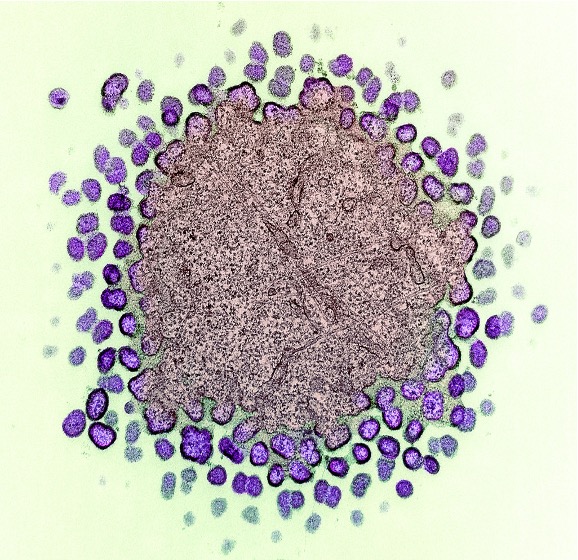
TEM (HIV in purple)
Transmission of HIV
-
HIV is transmitted through the exchange of body fluids (via unprotected sex, blood transfusions or during pregnancy)
-
The risk of exposure to HIV through sexual contact can be minimised by using latex protection (i.e. condoms)
-
A small minority of people are immune to HIV infection (they lack the CD4+ receptor on TH cells that HIV requires for docking)
-
HIV is a global issue, but is particularly prevalent in poorer nations with limited access to quality education and health systems
Body Fluid Transmission
